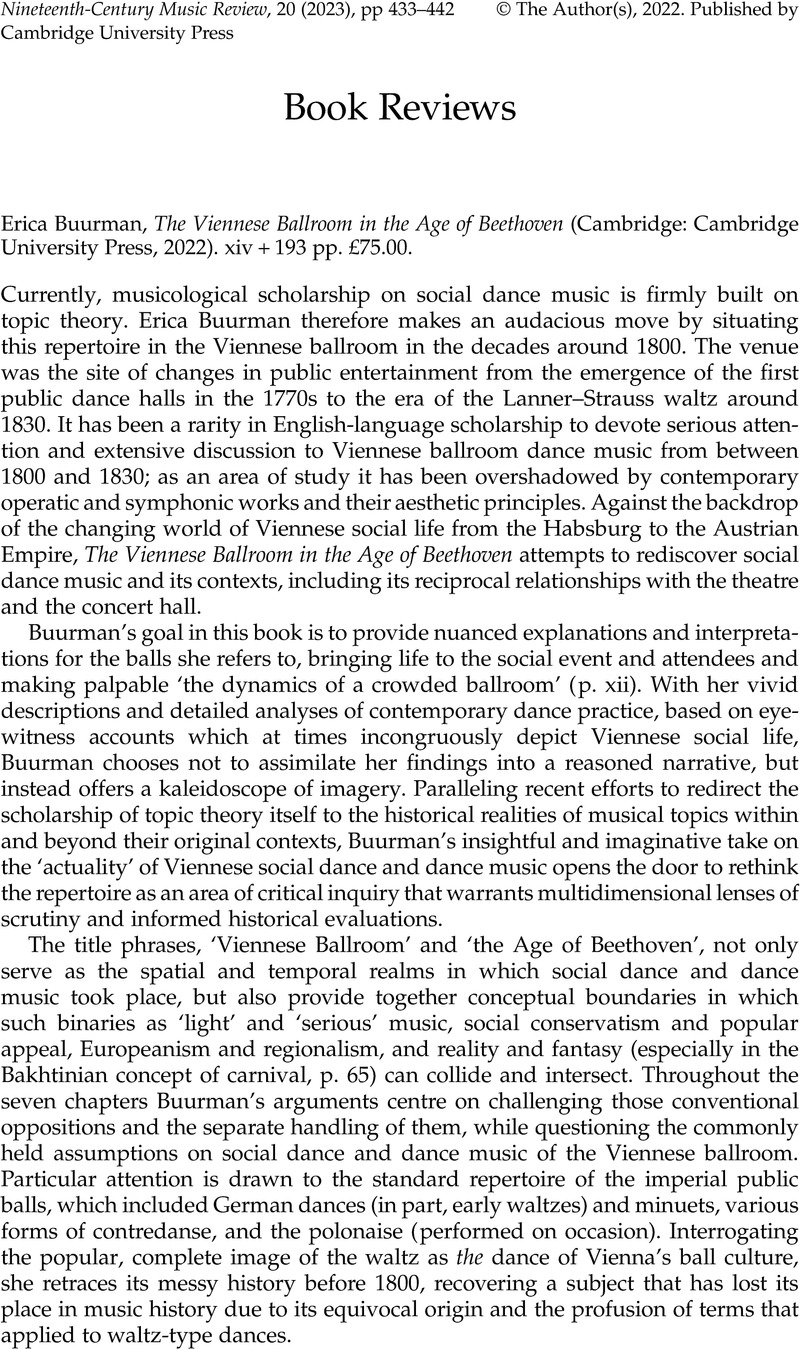No CrossRef data available.
Article contents
Erica Buurman, The Viennese Ballroom in the Age of Beethoven (Cambridge: Cambridge University Press, 2022). xiv + 193 pp. £75.00.
Review products
Published online by Cambridge University Press: 02 November 2022
Abstract

- Type
- Book Review
- Information
- Nineteenth-Century Music Review , Volume 20 , Special Issue 2: Tsarist Russia and the Musical World Nineteenth-Century Salonmusik , August 2023 , pp. 433 - 437
- Copyright
- Copyright © The Author(s), 2022. Published by Cambridge University Press
References
1 Similarly, Emily Green identifies the composers of arrangements as ‘primary composers’ and the composers of the borrowed works as ‘source composers’. See Chapter 4 of Green, Emily H., Dedicating Music, 1785–1850 (Rochester: University of Rochester Press, 2019)Google Scholar.
2 For more details about Anton Diabelli's diverse career in music and music business, see Nettl, Paul, The Beethoven Encyclopedia (New York: A Citadel Press Book, 1994)Google Scholar; and Alexander Weinmann and John Warrack, ‘Diabelli, Anton’, in Grove Music Online, www.oxfordmusic.com (accessed 15 Aug 2022).
3 Laura Tunbridge remarks, ‘The capital of the Habsburg Empire had been Francophile – and its court Francophone – for music of the eighteenth century’. See her Beethoven: A Life in Nine Pieces (New Heaven: Yale University Press, 2020): 71–2. About the ongoing influence of the French in Vienna's culture, and the city's cultural inertia, see also Jones, Rhys, ‘Beethoven and the Sound of Revolution in Vienna, 1792–1814’, The Historical Journal 57/4 (2014): 947–71CrossRefGoogle Scholar.



